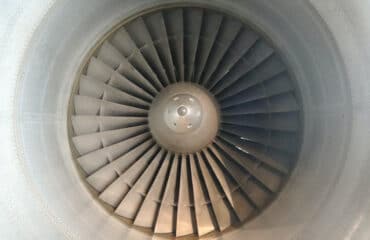Active Magnetic bearings: Technology That Can Ease Design of High-Speed Machinery
Engineers have been thinking about solutions to reduce losses in rotating machines since the beginning of the turbomachinery era in the nineteenth century. Losses associated with fluid motion or the production of beneficial effects are associated with the primary aim of machine operation, whereas losses in rotor bearings are simply bothersome and unavoidable. While both fluid film and rolling element bearings are functional, their operational principles result in higher friction, which is the strongest predictor of loss. However, what if we could eliminate friction in essential supports and therefore reduce losses in rotating machines? What if a rotor could levitate and spin in the air, propelled by magical forces? Additionally, what if this magic could yield even greater returns, such as the ability to vary the stiffness of rotor supports and ensure safe passage through resonances? Fortunately, experts have already discovered a way to make this enchantment a reality through the use of active magnetic bearings.
Although there are many examples of active magnetic bearing applications nowadays, this topic still holds various problems for engineers. Each active magnetic bearing unit requires the development of a unique
control system algorithm and ensuring the reliable rotor dynamics of a turbomachine in active magnetic bearings with the non-resonant operation, small vibrations, and stable motion.
When constructing high-speed rotating machinery such as turbines, compressors, Organic Rankine Cycle systems, and flywheel energy storage systems, active magnetic bearings (AMBs) offer distinct advantages over a conventional roller or fluid-film bearings. AMBs, in comparison to traditional bearings, suspend the target rotor in a magnetic field. As a result, a non-contact rotor support system is created with exceptionally low friction and no wear from touch.
The main idea of an active magnetic bearing is based on electromagnetic processes. An electrical current passing through densely wound copper coils creates magnetic fields which interact with a magnetized sleeve connected to the rotor.
Sounds pretty simple, right? But why on Earth did it take so much time to go from the general ideas to a real industrial application of active magnetic bearings?
The answer is in the rotor dynamics. Stabilizing turbomachine rotors in active magnetic bearings is a challenging task, but also, this is the only way to use all the advantages of bearings that need to be compliant or stiff enough at certain rotational speeds of the rotor. Correct variations of the bearing stiffness are ensured by a control system, and this is where the second complexity of an active magnetic bearing comes into play.
The active magnetic bearing control system measures rotor displacements in or near the bearing using special sensors, which transform these displacements into signals coming to a comparator and a control device (controller). In turn, the controller provides the bearing electromagnets with an adequate response in the form of changing current and, thus, the variable bearing stiffness. This response is enabled by specially developed control laws which differ from one machine design to another. Naturally, these laws are far from obvious and require deep studies. The control system of an active magnetic bearing combines mechanical and electromagnetic processes into one interconnected electro-magneto-mechanical process related to the dynamics of the whole rotating machine.



